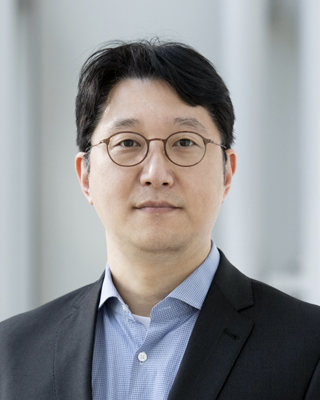본문
Self-Powering Sensory Device with Multi-Spectrum Image Realization for Smart Indoor Environments

by Prof. JaeHong Park
Department of Chemistry & Nanoscience
PURE Research Profile
jaehong@ewha.ac.kr
A Breakthrough in Indoor Optoelectronic Technologies
Researchers at Ewha Womans University, in collaboration with leading institutions (Korea University (Prof. Jae Won Shim) and Korea Institute of Science and Technology (KIST, Dr. Do Kyung Hwang)), have developed a groundbreaking self-powering sensory device with dual functionalities—energy harvesting and image sensing—optimized for smart indoor environments. This innovation addresses the growing demand for efficient, sustainable technologies tailored for the Internet of Things (IoT) applications in ambient conditions.
Leveraging Spectroscopy for Multifunctional Indoor Technologies
Through cutting-edge spectroscopic techniques, researchers at Ewha Womans University have unveiled the charge dynamics critical to the performance of advanced self-powering sensory devices. By employing flash-photolysis time-resolved microwave conductivity (FP-TRMC), the study presents the interplay between charge-carrier mobility, and the dynamics of charge-carrier generation and recombination in multi-component photoactive layers, driving innovations in energy harvesting and image sensing.
Spectroscopic Insights into Functional Design
The FP-TRMC experiments, conducted by Ewha’s research group, quantified the transient charge carrier dynamics, demonstrating increased high free-charge generation yield with elongated charge-carrier lifetime for the reported device. These findings guided the design of a device achieving exceptional power densities exceeding 80 μW cm⁻² in rigid setups and 76 μW cm⁻² in flexible configurations. This precise understanding of charge transport mechanisms allowed the seamless integration of organic photovoltaics (OPVs) and organic photodetectors (OPDs) into a single multifunctional system.

Figure. FP-TRMC experiments showed a new dual functional optoelectronic device based on PM6:L8-BO:PC71MB exhibits a longer charge-carrier lifetime and increased charge-carrier generation yield (ϕ).
Toward a Sustainable Future
This research offers a strategic pathway to integrate multifunctional sensory capabilities into compact, low-cost devices. By leveraging the synergistic potential of OPV-OPD integration, the study opens doors to sustainable and scalable solutions for smart indoor environments.
For more details, visit the full publication in Advanced Materials or contact the research team at the Department of Chemistry and Nanoscience, Ewha Womans University.
* Related Article
Tae Hyuk Kim, Byoung-Soo Yu, Hyun Woo Ko, Na Won Park, Muhammad Ahsan Saeed, Jongtae Ahn, Suyeon Jo, Dae-Yeon Kim, Seon Kyu Yoon, Kwang-Hoon Lee, Sang Young Jeong, Han Young Woo, Hyunwoo J. Kim, Tae Geun Kim, JaeHong Park, Min-Chul Park, Do Kyung Hwang, Jae Won Shim, Self-Powering Sensory Device with Multi-Spectrum Image Realization for Smart Indoor Environments, Advanced Materials, Vol. 36, Issue 2, 2307523, January 2024